Kichisen: refreshing the taste and style of traditional Kyoto-style kaiseki
My photo below tells it all: the focused gaze of the Kichisen’s master chef Yoshimi Tanigawa shows how much focus goes into his food and how much he cares to ennoble each customer’s delight from it. Tanigawa’s studies of traditional Japanese cultural arts such as tea ceremony, flower arrangement (ikebana), incense ceremony, calligraphy and poetry (beyond Bashō) widened his perspective on Japanese traditional gastronomy as he incorporates these cultural elements at Kichisen in Kyoto.
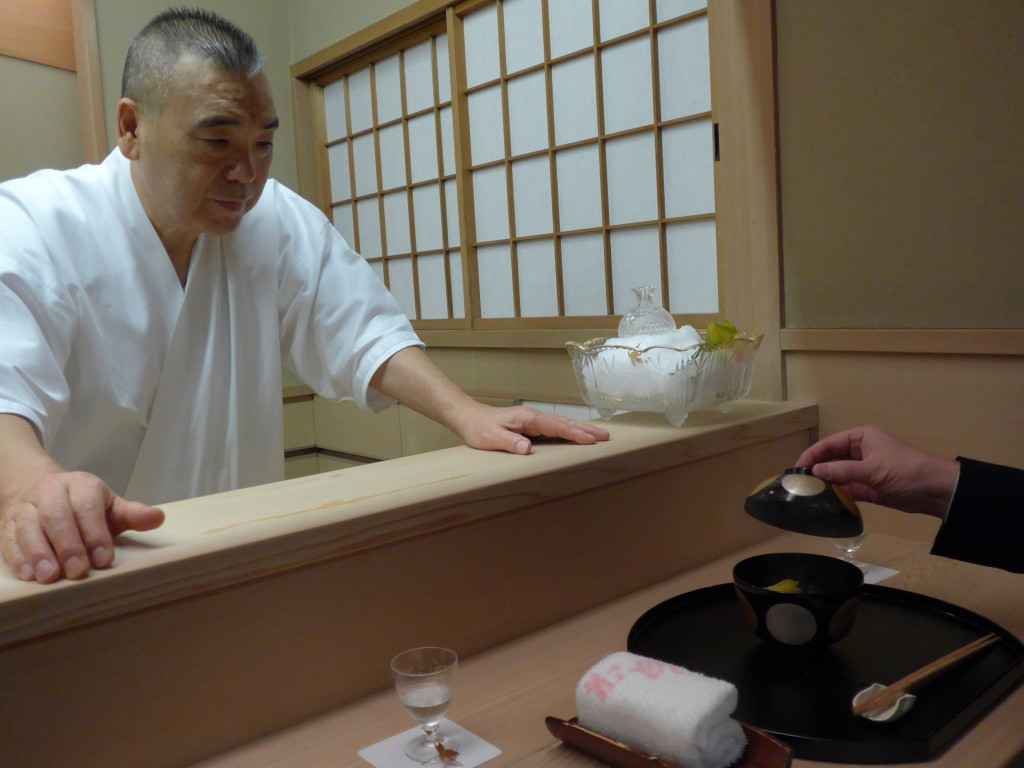
Kaiseki highlights nature: keeping it grounded at Kichisen
The skilled chef participated in 1999 in a TV program ‘Ryori-no-tetsujin‘ (Iron Chef) defeating another Japanese master chef Masaharu Morimoto (now based in New York), yet his culinary star has not shone over his focus on his multi-Michelin star restaurant.
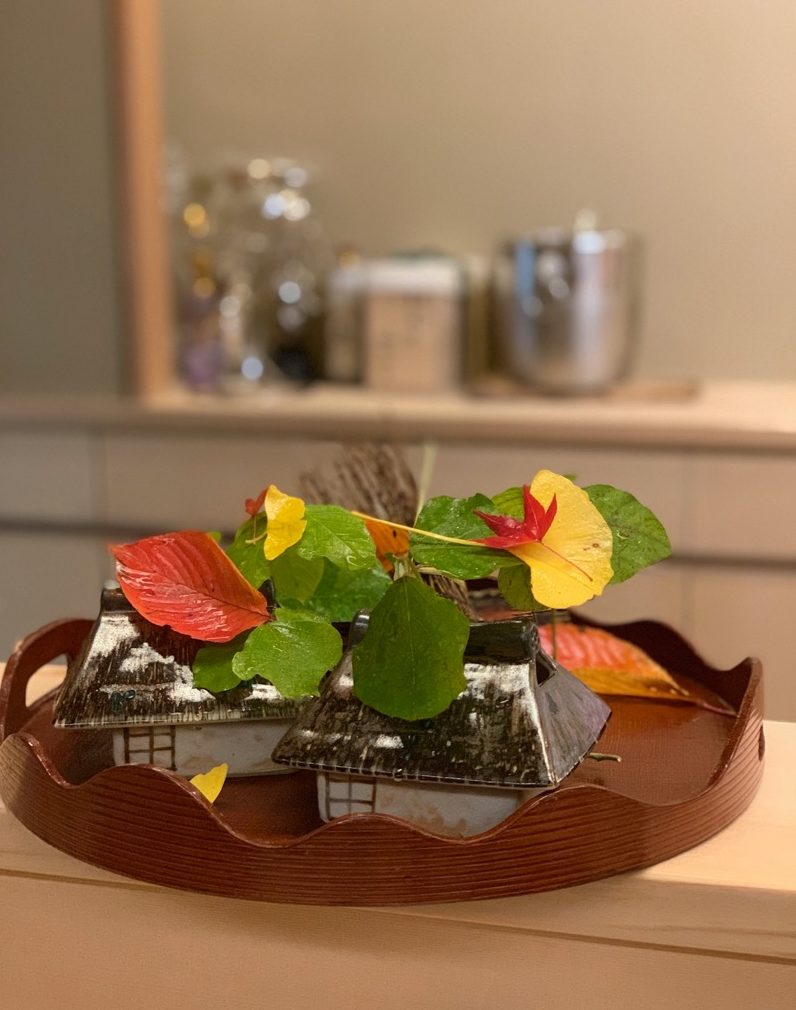


At Kichisen Japanese kaiseki is served in a multi-course procession of seasonal delights. This traditional Kyoto cuisine is a mix of imperial court cuisine (yūsoku-ryōri), samurai cuisine (honzen-ryōri), Buddhist temple cuisine (shōjin-ryōri), and tea ceremony cuisine (cha-kaiseki). Kaiseki was originally a set of small dishes served during the tea ceremony that was perfected in Kyoto by buddhist monks centuries ago.
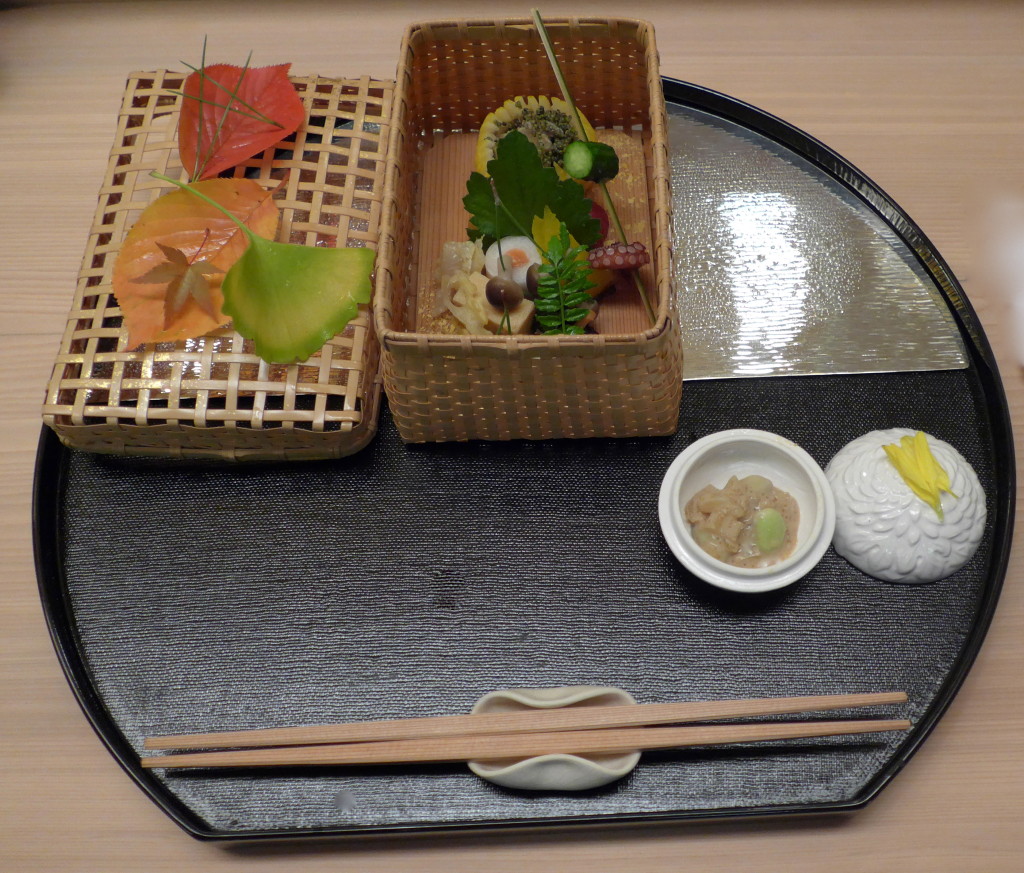
It is quiet, almost monastic inside every room in the house. After a warm welcome you will be ushered in. Take off your shoes and slide into the offered slippers. Wear your socks if possible. You might sit down in small, with tatami mats covered room, in a larger Western high table room or alongside a wooden counter in the Kai-no-ma room. A special room for the tea ceremony (Suisho-an) has to be specifically booked ahead. Located in the vicinity of Shimogamo-jinja Shrine, a UNESCO site, and the millennia-old forest of Tadasu-no-mori enriches the natural traditional ambiance as you venture in and out.
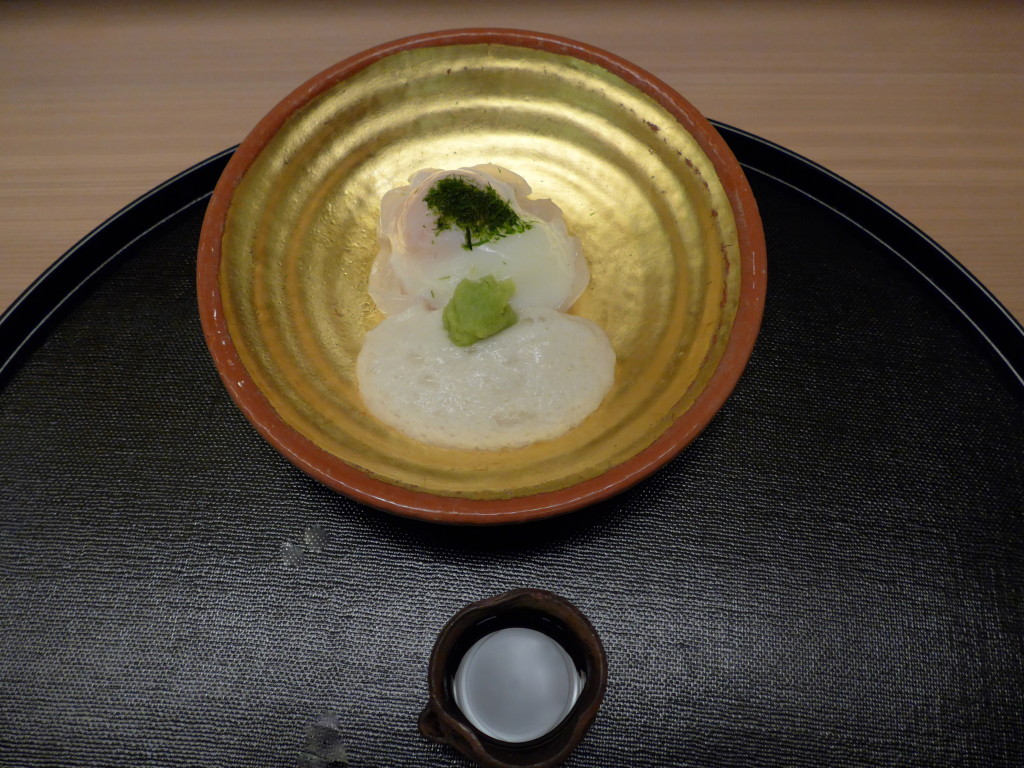
Kaiseki is an art form rather than just a simple meal to sate one’s appetite. Each course is unique in taste but also in presentation including the utensils. As is characteristic of Kyoto cuisine, seasonal ingredients stay in the forefront. Reverence of tradition, triumph of ingredients while striving for new forms of presentation set apart Kichisen’s spirit of ‘discovering new things by studying the past’.


Nature unveils itself in front of you in the “sakizuke,” which serves as an appetiser before the meal. Seafood, pickled vegetables and mushrooms were laid out like a foraging bonanza in a straw basket decorated by colourful local autumn leafs.


Following clear soup called “o-wan” prepared our bellies for the protein fellows of the kaiseki procession. “Mukōzuke” a sashimi (raw fish) often changes daily according to best possible quality available and served with a wide variety of seasonal condiments. Served under a straw cage decorated with the autumnal palette of the washed leafs picked in the surrounding garden, natural beauty was brought to our lips. O-toro fatty tuna was served simply over nigiri rice with freshly grated wasabi and pickled daikon.
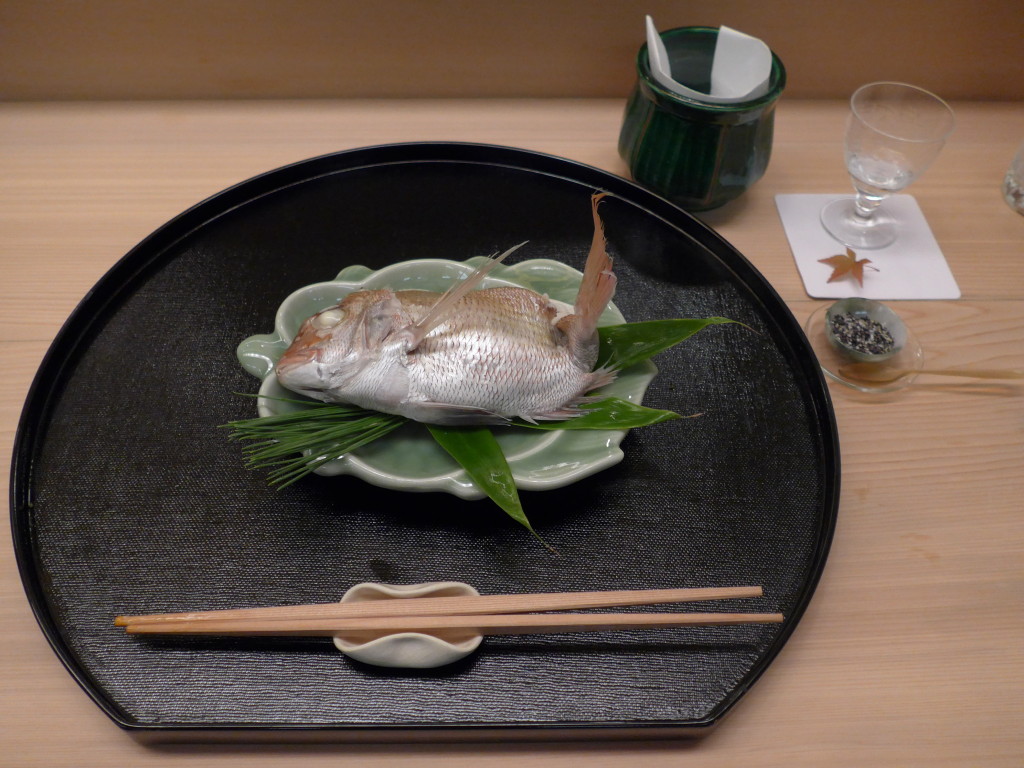
The soggy material in a gold-painted bowl may look weird, but this is one of the chef’s signature dishes – the runny (onsen-style) egg à la Kichisen. Sprinkled with diced seaweed, an airy foam and a morsel of freshly grated wasabi. Its particular gooey texture can be challenging.
“Nakazara” (middle dish) was more simple but also simply delicious as the whole ‘nemo’ steamed fish stared at me from the plate. The white meat was infused with fragrant japanese condiments and softly dissolved in my mouth with a sip of saké.

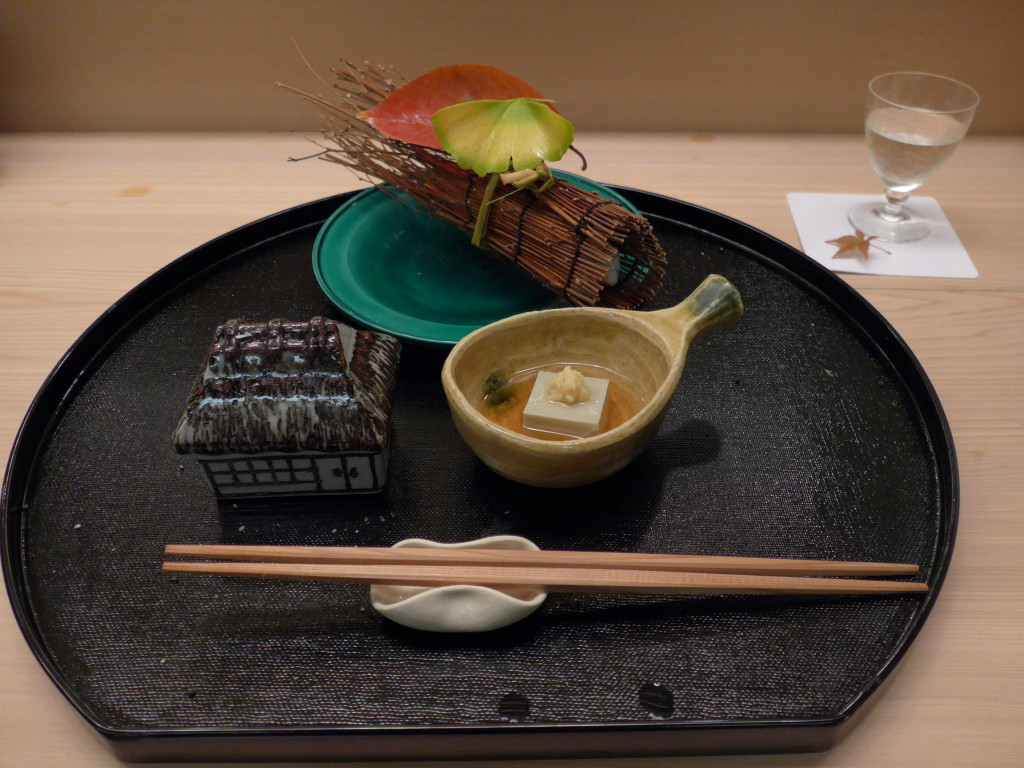
More art on the plate came in “hassun,” a mixed platter of tastes from both the mountains and the sea. The November sea catch of boiled crab legs was enveloped in a thin wooden wrap, while the mushrooms from the mountains were hiding inside the beautifully painted ceramic house. I bet that children would enjoy eating anything served in this fairy manner.
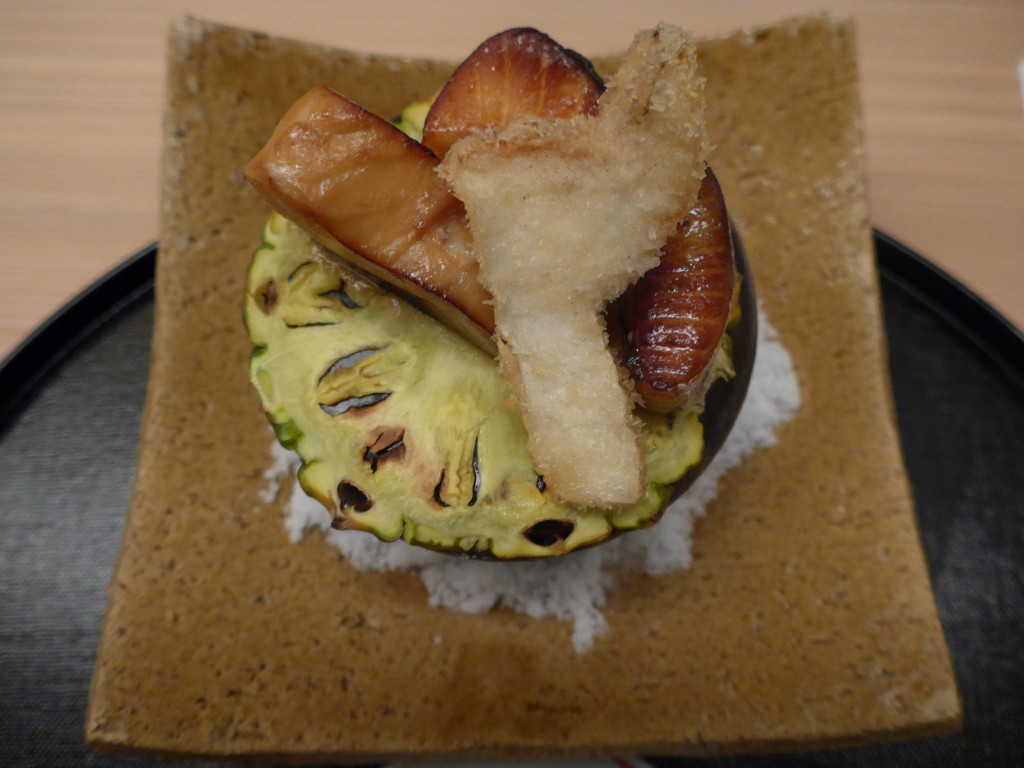
A “nimono” (boiled) soup-like dish arrived with radish and wasabi topping, followed by a “yakimono” (grilled) dish, which was my absolute favourite. I am biased to anything pineapple so I need to confess here though. The grilled thin slice of pineapple was rather in the background though, underlining the delicate sweetness of the fish and balancing the oily nature of the mushroom tempura.



Then came gohan, a rice dish. A giant claypot of steamed rice arrived with two beautiful bowls to be filled. Autumn mushrooms, egg and condiments accompanied the first serving of gohan. After came a more complex pairing of the rice with gingko nuts and seafood.
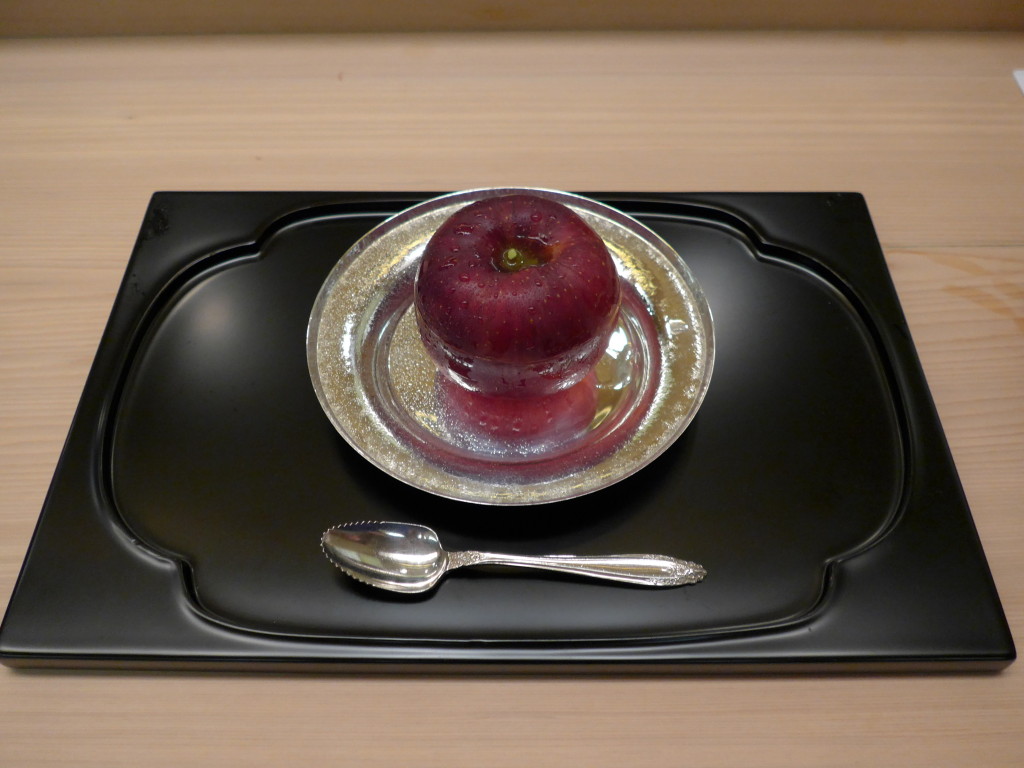
The palate cleanser ( “kuchi-naoshi”) in the form of chilled pumpkin soup was refreshing. Later we were presented the suite of deserts. Announced by an exquisite devil-red iced apple with its sorbet mashed inside and refreshing chilled tomatoes so light and crisp like an autumn breeze in the gardens of Kyoto. This is a signature palate cleanser at Kichisen, sometimes served on ice snow together with other sweets. Next miniature delicate sweets balanced by powdered green tea (matcha whisked skillfully by the chef) to help with digestion. Balance achieved! Seasonal fruit delights and Japanese greenhouse strawberries can also brighten the finale.


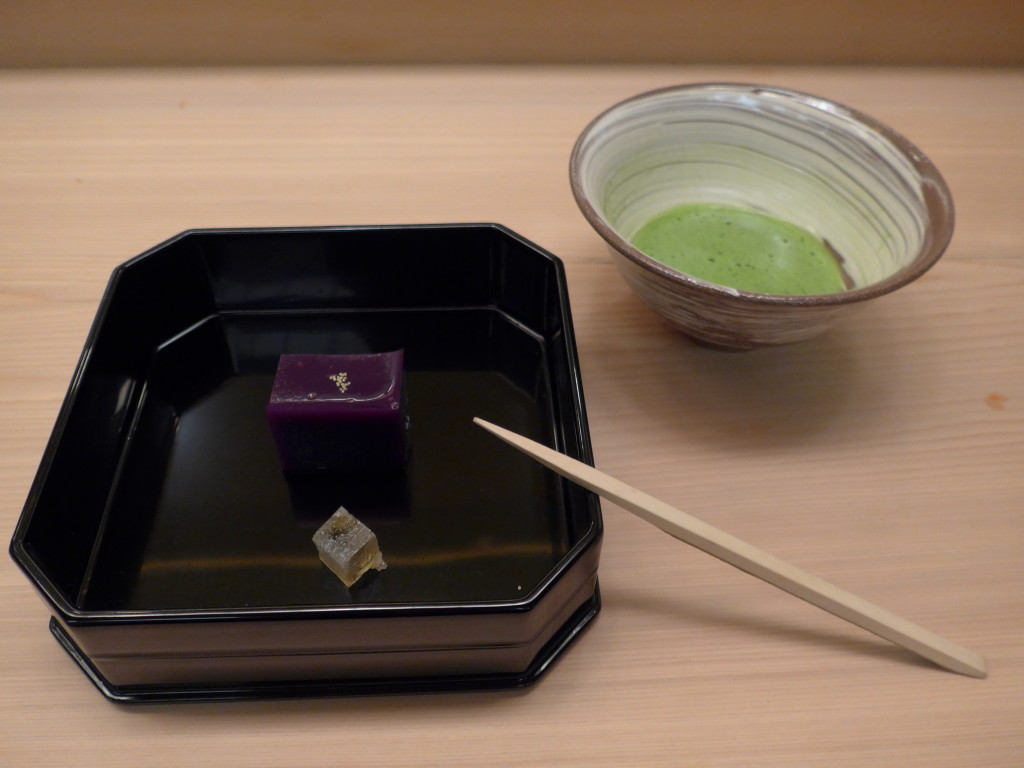
Drinks: The wine list is concise yet impressive with the giants of Lafite, La Tour, Petrus and Mouton Rothschild figuring on its pages next to the Domaine de la Romaine Conti’s Montrachet. All hideously expensive, so going for a bottle of saké is not only justifiable but advisable if you do not know what to do with your yens. We love the chef’s suggestions. Served in small carafe so you can taste more or in a bottle, like the superb sake we had on our second visit.
The pure and delicious sake is wonderfully presented in a crystal jar served on a mountain of soft ice to keep it cold. It works just perfectly with the kaiseki style of Kyoto food at Kichisen.
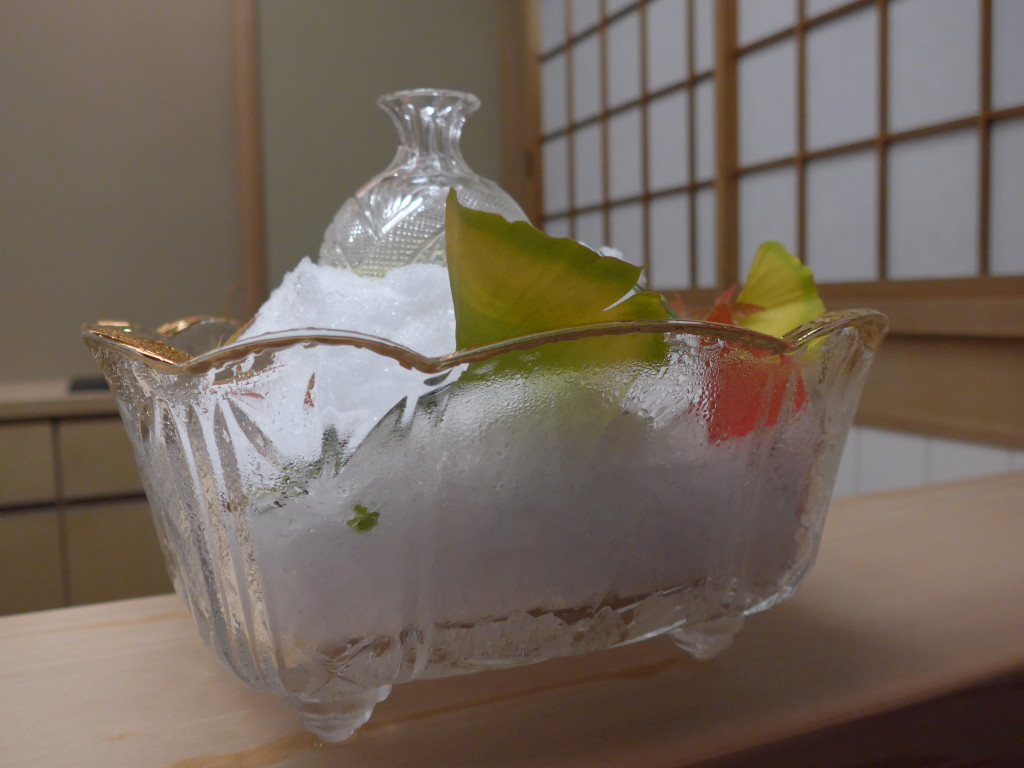
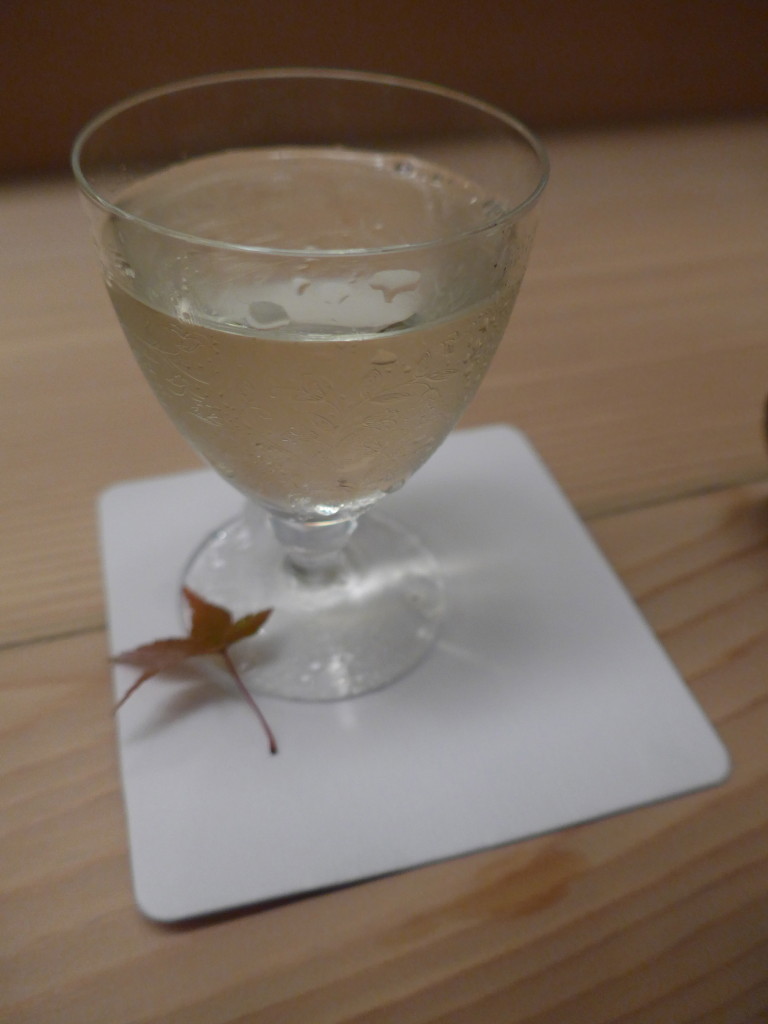

It’s been a treat to our senses, a creative discovery of Japanese ceramics and glass work, as well as always a perfectly balanced meal for our dinners at Kichisen. Surely, this is one of the rare Kyoto restaurants where tradition meets contemporary sensibility.
Visits: November 2o13 & 2019 (this article was updated after the fall 2019 meal)
Price: Very high (superb ingredients, mastery of cooking and private atmosphere). Lunch starts at ¥8,000, dinner at ¥14,000.
Opening hours: Lunch: 12:00-2p; Dinner: 5-9pm
Address: 5 Tadasu-no-mori (Morimoto-cho), Shimogamo, Sakyo-ku, Kyoto, Japan.
Contact: + 81 075 711 6121


RT @winebeing: Kichisen: traditional Kyoto-style kaiseki stamped with three Michelin stars in the upcoming edition of 2014… http://t.co/rKz…
Pingback: The Living 360 | Remixing The Cool, The Relevant and The Irresistible | - Remixing the cool, the relevant & the irresistibleThe Living 360 | Remixing The Cool, The Relevant and The Irresistible